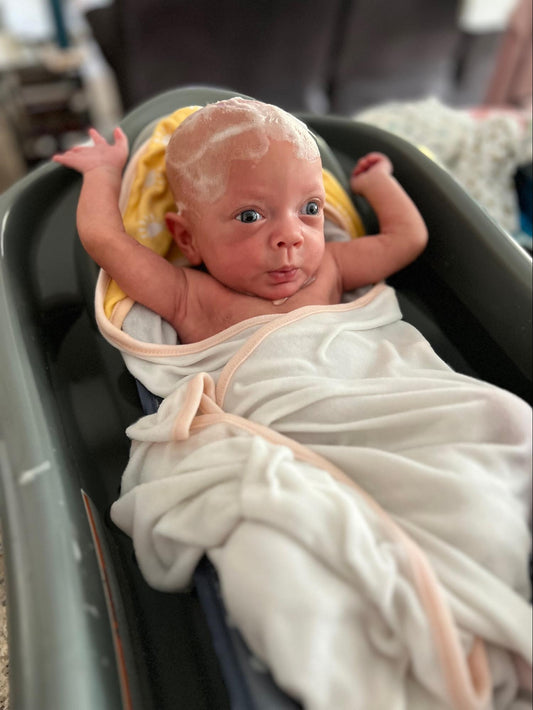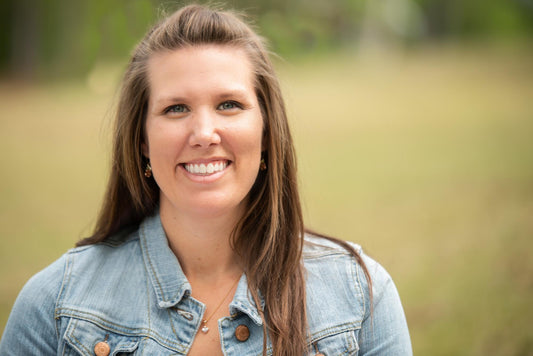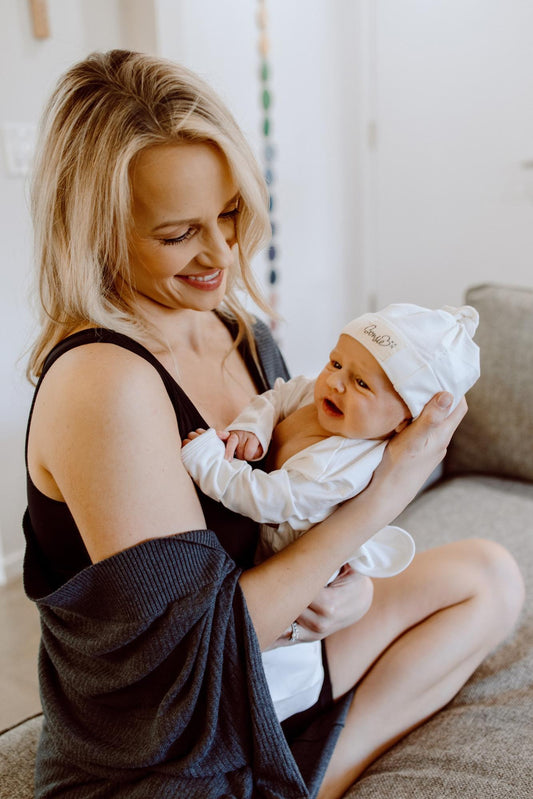Share
Postpartum Healing and the Mother-Baby Dyad with Morgan Lynn
Rohini MoreCottage Inside is a Doula Practice in Los Angeles. It is the dream and prayer of Morgan Lynn, a Zen student and certified Birth and Postpartum Doula trained in the Ayurvedic tradition. An avid home cook, Morgan grows much of the food for her kitchen in her Runyon Canyon garden, following the principles of the Biodynamic French Intensive Method.

Morgan Lynn with new mom and baby
Wouldn’t it be wonderful if all new moms had someone like Morgan supporting them during their pregnancy and in the fourth trimester? Our team at Bonsie thinks so too! While we can’t hire Morgan for all the new moms we reach, we can share her wisdom and guidance to help you create a peaceful postpartum experience full of healing and bonding. Enjoy!
How moms can care for themselves in the postpartum time:
After birth, mamas are in a state of openness, physically while the uterus is involuting, or returning back to its pre-pregnant state and also emotionally and spiritually.
This is a heightened time of vulnerability and a precious opportunity to forge familial bonds by shutting down outside demands so that we can show up for each other with love. A well-supported postpartum time is one of the best opportunities we have to not only birth ourselves as parents, but also to open up new layers and depths in our relationships with our partners, families, friends and communities. Ask for support during this precious transition and don’t forget to reciprocate it whenever and however you can.
I recommend planning for a 6 week minimum period of time, starting from the birth of the baby, to have support for yourself and your partner so that outside responsibilities are reduced as much as possible and the family can focus on resting and recovering after birth, bonding with their newborn and initiating and establishing breastfeeding. This means removing work responsibilities if possible and having help with the daily life tasks like meal preparation, house cleaning or help with childcare for older children.
Proper postpartum care is rooted in supporting parents to be with their newborns while simultaneously meeting their own needs, so craft a plan that allows you access to guidance when you need it, but ultimately understands the unique needs of the mother-baby dyad in the postpartum time.
Support geared toward taking over the care of the baby or taking the baby away from mama is best delayed until after the initial 6 weeks.
By no means do we need to hire a ton of people or spend a ton of money to be properly supported, however, it is an unfortunate reality that unlike many other developed countries, here in the United States, we are left almost completely unsupported once the baby is born, (the US also has some of the lowest breastfeeding success rates and some of the highest perinatal mood disorder rates of any developed country) so it will take self-education and preparation and you’ll need to plan to advocate for yourselves. If you’re planning a birth with providers who practice a midwifery model of care, you’re likely to have more frequent visits with your provider in the early postpartum time, but in standard medical practice, postpartum care and support is limited in scope.
I actually recommend planning for the postpartum time, along with planning for pregnancy and labor, in the fertility stage, meaning the pre-conception time when we have the intention to conceive in the near future but are not actually pregnant yet. The earlier the preparation begins, the more options you’ll have and the smoother things will be when care is underway.
The way to optimize the birth and postpartum plan is actually to write it before conception, for several reasons. First, on a practical note, you have the opportunity to shop for insurance or switch to a plan that supports your birth and postpartum care plan and the provider team of your choice, and you may choose to seek supplemental coverage like faith-based health shares, which often have incredible coverage for maternity if you qualify/meet the requirements. Knowing your birth and postpartum care plan also means you’ll know what to budget for ahead of time and have time to save or set aside funds for the care you’d like to have and the time off from work.
When planning a shower or mother blessing in pregnancy, instead of registering for a ton of gifts for the baby, register for things you’ll need for your birth and postpartum plan. Newborns really don’t need that much stuff, especially if your intention is to breastfeed. Check out Little Honey Money, which is a wonderful platform where families can create a registry for the support they need through pregnancy and postpartum - things like lactation support, chiropractic care, pre and post natal massage, a childcare fund or doula care. It’s brilliant. And ask for help from your friends and family ahead of time, explaining that you’ll be observing a time of quiet bonding with the new baby after the birth - you can have someone organize a meal train for friends to pitch in preparing simple, nourishing postpartum foods to drop at your door so you have fresh cooked meals, have family that is planning to visit pitch in with home keeping tasks, running errands, cooking or spending time and doing special things with your older children.
On early attachment and skin-to-skin contact:
When I work with clients in my programming, I teach a private preparatory course for the postpartum time, which has a huge focus on what we need physiologically, as mammals, to thrive after the births of our babies. Establishing strong foundations for bonding and initiating breastfeeding is a practice of giving our bodies the right signals “early and often.” I remind clients that newborn humans are not born in a state to survive on their own like some other animals, so when there is separation of baby and mother at the umbilical cord, there should then ideally be an immediate re-attachment at the breast with baby skin to skin on mamas chest (I give the visual of “plugging back in”). Ideally, the medical team overseeing the birth should hold the same goals and should only take the baby off mama for urgent medical needs (routine practices like suctioning or wiping baby can be done on mama's chest - weighing baby can be delayed).
Maximizing skin to skin contact and vital touch (massaging babies) is beneficial throughout babyhood, but particularly crucial during the first 5 days of baby’s life, the period of time from the birth until the mature milk comes in. There is such a thing as too much swaddling during this time. When a baby is kept down to their diaper, on mother’s bare chest, so many wonderful things can happen. To name a few, the baby's wiggling legs over mother’s abdomen gently massage her uterus, stimulating it manually to contract while the release of oxytocin when baby suckles at the breast stimulates this contraction hormonally, thus optimizing mama’s recovery. In the skin to skin position, the baby's temperature is regulated by the mother's body, and the baby is free to latch at the breast as often as they like. They’re calmer and more content on mama's chest and can happily sleep off the great work of birthing (it’s hard work for both baby and mama!), with the gentle familiar beat of her heart near - maximizing everyone’s rest.
The early days are all about practicing a good deep latch and it’s recommended to have a latch check from an IBCLC or a postpartum doula at least on day 1 and day 5, more often if possible. A proper, deep latch is the root of so many things that help mom and baby thrive in the early weeks. And there are many, many other examples of the benefits of keeping the mother-baby dyad together in the early days.
Best practice in the earliest days postpartum is that baby is on mama, skin to skin, as much as possible before the milk comes in (and beyond), and when mama is napping, having a meal, showering, going to the bathroom, etc - baby is skin to skin on the partner parent.
This is following our biological nature and will ensure our systems get all the signals and communication they need to know that the baby is here and that it’s time to start healing mama, releasing love hormones to attach the parents to the baby, start developing the baby's immune system and start producing milk in abundance.
Find more information about Morgan and her Doula Practice on her Instagram page @cottageinside and on her website.
Thank you, Morgan!
Share
-
Category:
- All posts





